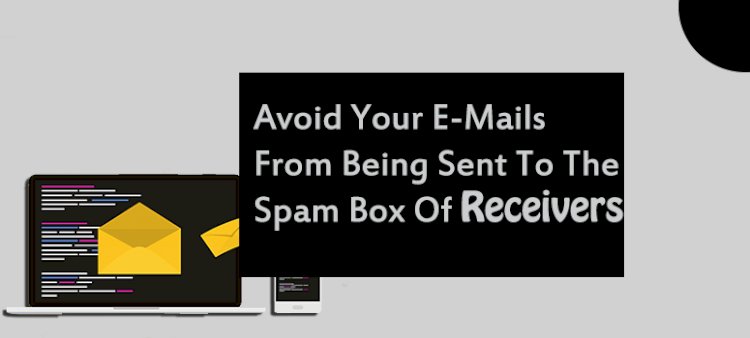How to avoid your Emails from Being Sent to the Spam box of Receivers
Here are a few ways to stop your email from being Treated as Spam

There are many reasons which will cause your emails to be treated as spam by a receiver. If that's the case, you must in all probability deploy a secure methodology to send emails.
Here are a few ways to stop your email from being Treated as Spam
1. Mark Emails as Not spam.
You can raise the recipients to mark your emails as Not spam. Sometimes, individuals mode to treat emails with AN unknown address as spam. If they mark the emails as not spam, it'll stop their redirection to their spam boxes.
2. Rethink your Email Sending choices/Options.
The PHP mail() could be easy yet Famous methods. However, it's AN outmoded mode to send emails because it lacks security. though we tend to permit our users to use PHP mail() on our servers, it's for one-time causing and testing messages.
In case of frequent correspondence, you have got to change from PHP mail() to SMTP. additionally, that being a reliable method to send emails, SMTP improves the delivery of your messages significantly. an extra bonus of switch to SMTP is: it'll increase the trust among the recipients. It makes your emails seem less suspicious and therefore a lot receptive.
If you always send emails via Webmail or an identical mail client (except plugins), please go with choice three.
3. Add a DNS Verification
Recent email deliverability is more attentive to originality. In response thereto, advanced mail services need extra verification of the sender. substantiating the legitimacy of the address, its domain, and different validations to verify the sender’s identity takes time which will lead the e-mail to be marked as spam if it doesn't pass.
Adding this 2 category of DNS records can solve this issue:
SPF record
If your domain connected to Onohosting by nameservers, the SPF record is already attached by default. it's available in your DNS Zone Editor.
Check the list of TXT records by looking out “SPF,” or
1. Login to your Control Panel.
1. Go to the Emails section.
2. Check your domain name under Email Deliverability.
If you didn't found any records (or if you are using external nameservers), then try to add the SPF record manually in cPanel.
DKIM Record
You can simply activate this record for cPanel with hardly any clicks.
4. Ingeminate the topic
You have to take care whereas phrasing the topic of your emails. the foremost common reason that restricts emails from being delivered is their subject.
Your subject line ought to be excellent and should not have:
a). Misspelled words.
b). The words like a test, Check, etc.
c). Phrases like- “Open this letter,” “Read me,” “URGENT,” etc.
d). Random characters, letters, or numbers.
Also-
a. Avoid writing the whole topic in CAPITAL LETTERS.
b. the topic should communicate or summarise its text content.
c. ne'er write the whole text of the e-mail into the topic and keep it short.
d. ne'er leave the topic blank.
e. Avoid adding Re: to reply to a message.
To clear your understanding:
a. Poor samples of the subject: “READ”, “siknvdjhvbls”, “Re:” –
b. smart samples of the subject: “Information regarding your order for ceiling tiles.”, “Received the delivery.”
5. Review your Email with a Mail tester
You need to review the content of your email. To verify however smart your email is, we have a tendency to advocate you utilize MailTester.
1. Send the message text you'll write in your emails to a brief address.
2. Alter the e-mail with the suggestions the Mail Tester shows.
Try these tricks and allow us to understand if they stop your emails to be sent to spam boxes.






















